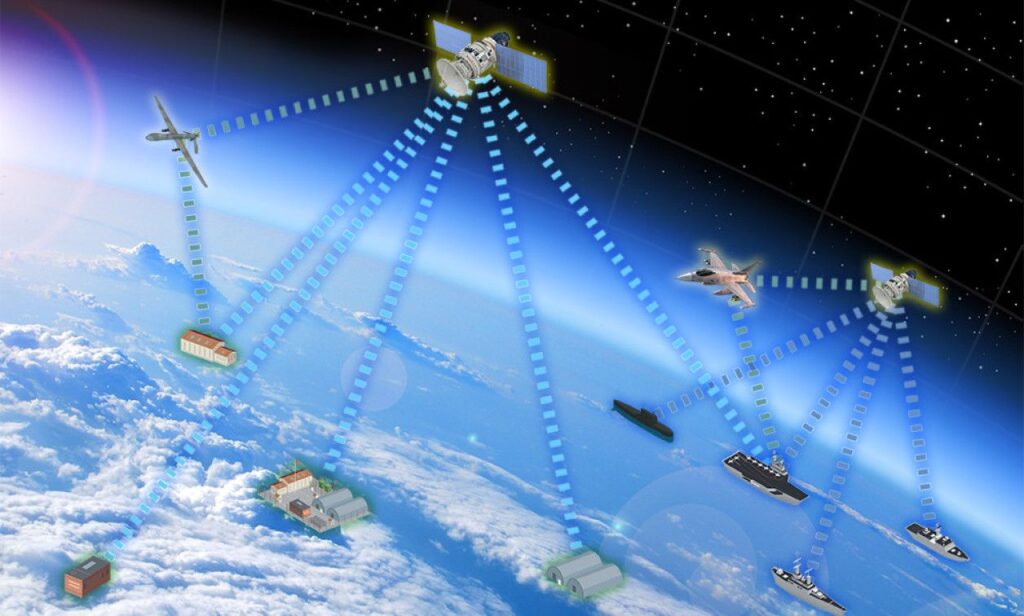
The transformation of the modern battlespace to include multi-domain effects presents Defence with new challenges and opportunities. The emergence of cyber, space, and information warfare as prominent domains necessitates a reevaluation and adaptation of military strategies. This article explores how defence could develop a comprehensive approach to consolidate multi-domain effects, ensuring operational superiority in an increasingly complex and dynamic environment.
Understanding the Multi-Domain Battlespace
In today’s warfare landscape, the traditional domains of land, air, and sea are intertwined with cyber, space, and information domains. This expansion reflects a significant shift in military strategy, where digital and information threats are as crucial as physical threats. Defence must adapt to this new reality, which requires not only a strong presence in the physical domains but also a robust capability in digital and space arenas. Recognising and preparing for these challenges is key to maintaining national security and operational effectiveness and may even need a shift in thinking to view Space, Cyber and Information Warfare are the dominant domain and the three legacy domainsas subservient in future conflict.
Integrating Traditional and Emerging Domains
The success of Defence in the modern battlespace hinges on the effective integration of traditional and emerging domains. This integration involves not just technological advancements but also significant doctrinal and strategic shifts. Operations across these domains must be synchronised to ensure they complement and reinforce each other, rather than ‘in support’ or ‘adding to’. . The goal is to create a force that is adaptable, responsive, and capable of conducting operations that leverage the strengths of each domain to achieve superior outcomes.
The Role of Technology
Technological superiority is a critical component of modern military strategy. Defence must focus on developing and integrating cutting-edge technologies such as artificial intelligence, unmanned systems, and advanced cyber capabilities. These technologies enhance real-time intelligence, improve decision-making, and increase the efficiency of operations across all domains. The adoption of these technologies will play a pivotal role in maintaining tactical and strategic advantage.
Cyber and Space Capabilities
The significance of cyber and space capabilities in future conflicts is paramount. Defence’s approach should encompass robust cyber defenses and offensive capabilities to safeguard national infrastructure and disrupt adversarial networks. Space capabilities, especially in satellite communications and reconnaissance, are vital in maintaining situational awareness and providing critical support to ground, naval, and air operations. In addition, leaders must move away from their aversion to cloud assets and what I’d suggest is legacy thinking that sovereign data centres and assets they can see provide security and move to distributed and redundant mesh networks, leveraging industry products which will provide high availability as well as dynamic and agile recovery from attack.
Human-System Integration
In a technologically advanced battlespace, effective human-system integration is essential. Defence must ensure that its personnel can work seamlessly with automated systems, enhancing human decision-making rather than replacing it. This integration is crucial for maintaining the effectiveness of operations and ensuring that technological advancements are leveraged appropriately.
Information Warfare
Information warfare has become a critical aspect of modern military strategy. Defence must develop sophisticated capabilities to both protect sensitive information and exploit enemy vulnerabilities. This includes psychological operations and strategic communication aimed at influencing adversary decision-making and public perception. Mastery of information warfare will be a key determinant of success in future conflicts.
Interoperability and Alliances
Interoperability with international allies is crucial for effective multi-domain operations. Defence must continue to invest in joint exercises, shared communication platforms, and collaborative planning. This ensures cohesive and synchronised actions in coalition environments, leveraging the strengths of international partnerships to achieve common objectives.
Defence must also be pragmatic and accept localised solutions which seek to reach ‘nirvana’, often do not deliver capability quick enough, nor in many cases, does not leverage research and development already carried out by partner nations, often resulting in duplication without interoperability, creating inefficiencies and high sustainment costs, and in worst case scenarios, no capability at all.
Training and Doctrine Development
Adapting training programs and military doctrines to the realities of a multi-domain battlespace is vital. Defence needs to equip its personnel with the skills and knowledge required to navigate and succeed in a complex and technologically advanced environment. This includes not only technical training, but also strategic and tactical education tailored to multi-domain operations.

As Defence looks towards the future, developing a strategy for multi-domain operations that leverages technological advancements and adapts to the evolving nature of warfare is essential. By doing so, defence forces can maintain strategic and operational superiority in a rapidly changing global security environment.
Further Reading
- “The Future of Warfare in the Information Age” by Robert R. Leonhard
- “Cybersecurity and Cyberwar: What Everyone Needs to Know” by P.W. Singer and Allan Friedman
- “Joint Operational Warfare Theory and Practice” by Milan Vego
- “Multi-Domain Battle: Evolution of Combined Arms for the 21st Century” by the U.S. Army Training and Doctrine Command
- “AI at War: How Big Data, Artificial Intelligence, and Machine Learning are Changing Naval Warfare” edited by George Galdorisi
- “The New Rules of War: Victory in the Age of Durable Disorder” by Sean McFate
- “Space Warfare in the 21st Century: Arming the Heavens” by Joan Johnson-Freese
- “Wired for War: The Robotics Revolution and Conflict in the 21st Century” by P.W. Singer